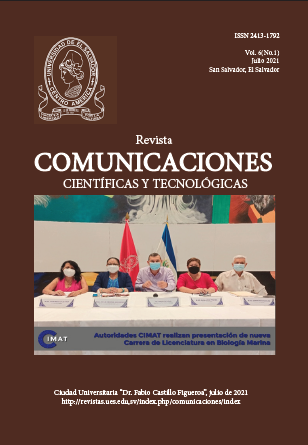Preparation of low cost SERS-substrates for virus characterization
Keywords:
SERS, Virus, Influenza, Coffe ring effect, NanoparticlesAbstract
Raman spectroscopy is a technique that allows the characterization and detection of a wide range of molecules. The characterization of biomolecules and viruses has been a novel application in the last decades. A relevant problem for applying this technique is the low intensity of the Raman signal and the low concentration of the analyte, which makes the identification of molecules and viruses quite difficult. An alternative to overcome this problem is the use of surface- enhanced Raman spectroscopy (SERS). This involves the use of SERS-substrates that generally are very expensive and can only be used once. In this work, we report the preliminary results of virus detection by SERS using low-cost homemade substrates and commercially available substrates. Characteristic Raman peaks associated with the influenza virus were detected. The results obtained with the homemade SERS-substrates are comparable to the obtained by using the comercial ones.
Downloads
References
Ambartsumyan O, Gribanyov D, Kukushkin V, Kopylov A, and Zavyalova E. 2020. SERS-based biosensors for virus determination with oligonucleotides as recognition elements. Int. J. Mol. Sci. 21 (9): 3373. Available from: https://doi.org/10.3390/ijms21093373.
Chang CW, Liao JD, Shiau AL, and Yao CK. 2011. Non-labeled virus detection using in- verted triangular Au nanocavities arrayed as SERS-active substrate. SENSOR AC- TUAT B-CHEM 156 (1): 471–478. Available from: https://doi.org/10.1016/j.snb.2011.04.006.
Fan C, Hu Z, Riley L, Purdy G, Mustapha A, and Lin M. 2010. Detecting food- and waterborne viruses by surface-enhanced Raman spectroscopy. J. Food Sci. 75 (5): M302–7. Available from: https://doi.org/10.1111/j.1750-3841.2010. 01619.x.
Fernández Ramírez YP, Hoyos W, and Rudamas C. 2019. Absorption and reflectance spectroscopic characterization of cancerous and pre-cancerous cervical tissue. Rev. Cubana Fis. 36:106- 109. Available from: https://www.revistacubanadefisica.org/index.php/rcf/article/view/2019v36n2p106.
Galvan D and Yu Q. 2018. Surfaceenhanced Raman scattering for rapid detection and characterization of antibioticresistant bacteria. Adv. Healthc. Mater. 7 (13): 1701335(1–27. Available from: https://doi.org/10.1002/adhm.201701335.
Itoh T, Sujith A, and Ozaki Y: Surface–enhanced Raman scattering spectroscopy: Electromagnetic Mechanism and Biomedical Applications. In: Laane J. editor. Frontiers of Molecular Spectroscopy. Amsterdam: Elsevier. p. 289–319.
Kukushkin VI, Ivanov NM, Novoseltseva AA, Gambaryan AS, Yaminsky IV, Kopylov AM, and Zavyalova EG. 2019. Highly sensi- tive detection of influenza virus with SERS aptasensor. PLoS One 14 (4): e0216247(1– 14). Available from: https://doi.org/10.1371/journal.pone.0216247
Kumar A, Zhang Y, Li D, and Compton R. 2020. A minireview: how reliable is the drop casting technique? Electrochem. commun. 121: 106867(1–10). Available from: https://doi.org/10.1016/j.elecom.2020.106867
Lin YY, Liao JD, Ju YH, Chang CW, and Shiau AL. 2011. Focused ion beamfabricated Au micro/nanostructures used as a surface enhanced Raman scattering- active substrate for trace detection of molecules and influenza virus. Nanotechnology. 22 (18): 185308(1–8). Available from: https://doi.org/10.1088/09574484/22/18/185308.
Lipkin WI and Anthony SJ. 2015. Virus hunting. Virology 479-480: 194–199. Available from: https://doi.org/10.1016/j.virol.2015.02.006.
Lu H. 2003. A longitudinal Study of a novel dot-enzyme-Linked immunosorbent assay for detection of avian influenza virus. Avian Dis. 47 (2): 361–369. Available from: https://doi.
Downloads
Published
Issue
Section
License

This work is licensed under a Creative Commons Attribution-NonCommercial 4.0 International License.






